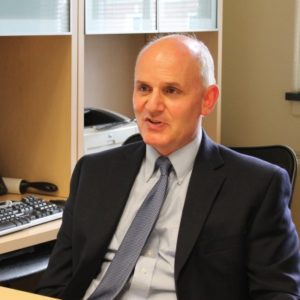FDA clears Trigeminal nerve stimulation (TNS) as ADHD treatment
 _____
_____
Although stimulant medications are generally considered to be a safe and effective treatment for ADHD, not all children benefit from this approach. Many parents are reluctant to begin their child on medication and some children experience unacceptable side affects.
For these reasons, developing safe and effective alternative treatments for ADHD remains a priority. Trigeminal nerve stimulation (TNS) is an alternative approach that was recently tested in a double-blind, sham-controlled study.
The Study:
TNS is a noninvasive, mininmal-risk neuromodulation procedure that has been previously approved in Canada and Europe to treat adults with medication-resistant depression and epilepsy.
The trigeminal nerve conveys sensory inputs to regions of the brain that underly the maintenance of attention. Individuals undergoing TNS treatment wear a small stimulator during sleep that emits a low-level current to stimulate the trigeminal nerve. This is hypothesized to increase activation in particular brain regions related to ADHD symptoms such that those symptoms are reduced.
TNS was tested in this study with 62 8- to-12-year old youth diagnosed with ADHD; roughly two-thirds were male and none were on medication during the study.
Participants were randomly assigned to receive 4 weeks of active TNS, or a sham treatment, during sleep. Children in the sham treatment wore the same device during sleep but their trigeminal nerve was not stimulated.
The study was introduced to children and parents so that the likelihood of being able to know for certain whether active or sham treatment was being provided was minimized. And, in fact, data collected during the study indicated that participants were not better than chance at knowing which group they were in.
The primary outcome measure was a clinician-completed rating of ADHD symptoms; the ratings were made based on interviewing parents and all other available clinical information. Ratings were completed before treatment began, after each week of the 4‑week trial, and one week after treatment had ended. Clinicians making the ratings were also blind to whether participants were receiving active or sham treatment.
Other measures included a quantitative assessment of brainwave activity, i.e., qEEG, collected before and after treatment. The qEEG data was used to determine whether active treatment was associated with significant changes in brainwave activity. Teachers also completed ratings of children’s classroom behavior.
The Findings:
During the 4‑week trial, ratings of ADHD symptoms declined significantly in both groups with significantly greater declines occurring in children who received active treatment.
In both groups, the bulk of the decline occurred in the first week, with a larger decline in the active group. Beyond the first week, children receiving active treatment continued to show modest declines in symptom ratings while ratings in the sham-treatment group remained stable.
After 4 weeks, group differences in ADHD symptoms ratings was in the moderate range, smaller than what is generally obtained with stimulant medications and about the same as what non-stimulant medications typically produce.
One week after treatment ended, symptom ratings had increased in both groups, but remained lower in children who had received active treatment.
Significant differences between active and sham-treatment groups were also found on the brainwave activity measure, i.e., qEEG. These differences were consistent with increased activation in a variety of brain regions for treated children.
Of particular interest was that these activation changes were associated with changes in ADHD symptom ratings. This suggests, but does not prove, that treatment-related changes in brainwave activity contributed to the reduction on ADHD symptoms.
Treatment group differences in behavior ratings provided by teachers was not found.
No adverse effects on TNS were reported and it was well tolerated by participants.
Summary and implications:
Results from this study indicate that TNS is a promising new treatment for children with ADHD. In terms of its impact on core ADHD symptoms, it appears to be as effective, on average, as non-stimulant ADHD medications but less effective than stimulants.
Based on these results, and perhaps other findings, TNS was recently cleared by the FDA as an ADHD treatment for children; it should be commercially available in several months.
For parents who may eventually consider this for their child, several items should be noted.
First, as noted above, available data indicates the likely impact on core ADHD symptoms is less than for stimulant medication.
Second, as with medication and behavioral treatment, positive effects are likely to reverse when treatment is discontinued.
Third, this study did not find positive results for teacher ratings which is an important limitation. And, the possible impact on academic functioning was not assessed. Thus, evidence that TNS improves children’s functioning at school is lacking.
These concerns suggest that caution is warranted in using TNS as a stand alone treatment for ADHD in children. Future work should examine whether it provides incremental benefits when used in conjunction with medication, behavior therapy, or other treatment approaches.
It would also be important to determine whether TNS leads to significant improvements at school, something that was not found here.
Finally, it should be emphasized that this was a relatively short trial of 4 weeks. Given that children receiving TNS continued to show modest declines in ADHD symptoms during each week of the trial, it is possible that additional improvements would accrue with sustained treatment.
If so, the possible benefits of this approach may be greater than what was demonstrated in this initial trial. Hopefully, results from longer trials of this treatment will be available soon.

– Dr. David Rabiner is a child clinical psychologist and Director of Undergraduate Studies in the Department of Psychology and Neuroscience at Duke University. He publishes the Attention Research Update, an online newsletter that helps parents, professionals, and educators keep up with the latest research on ADHD.


